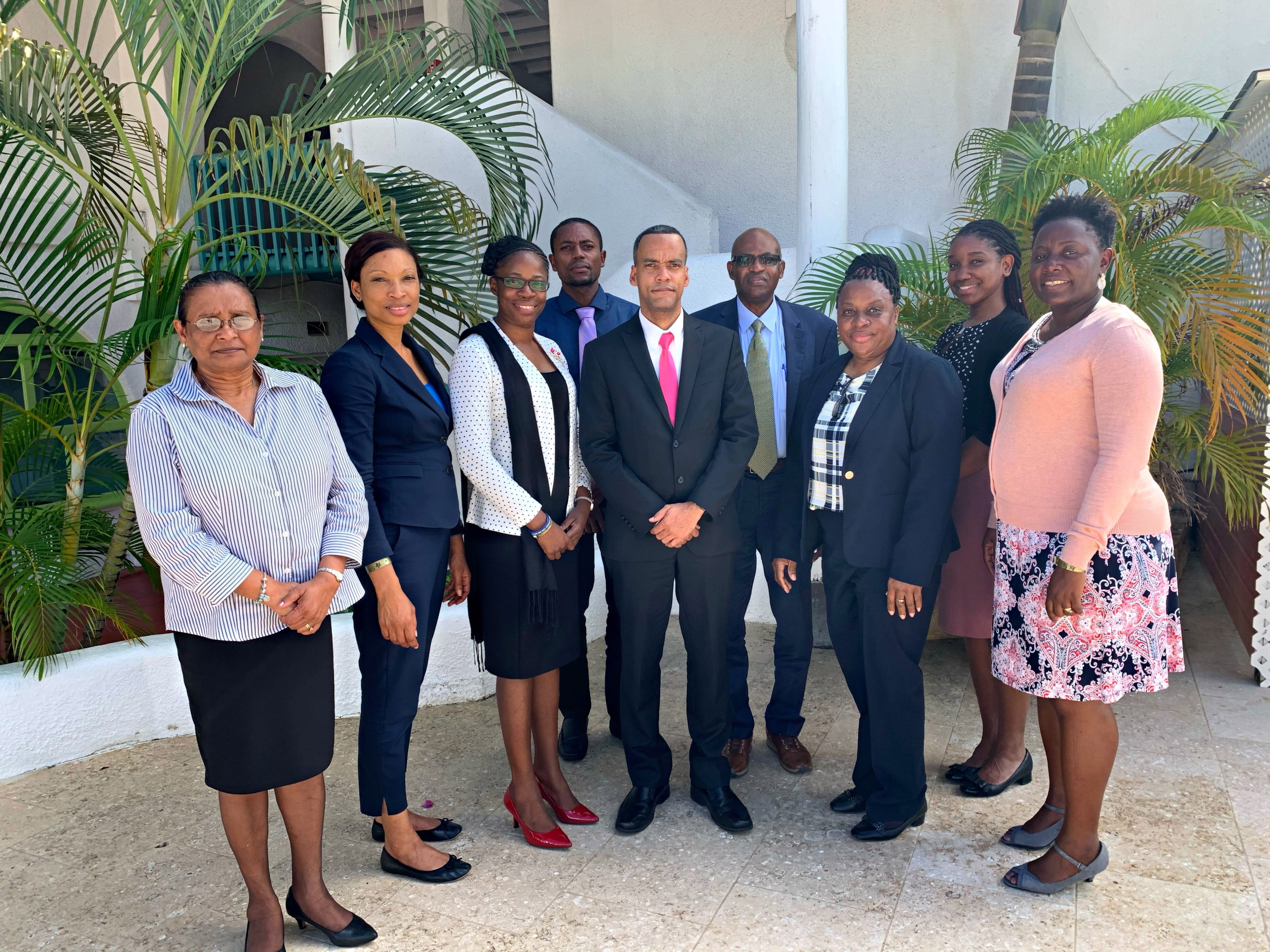Starting from Scratch
Radiation sources, including radioactive materials, are increasingly being used by experts, researchers and healthcare professionals in the Caribbean to improve agricultural outputs, deliver life-saving medical services, conduct research and make industrial processes more efficient. As part of its mandate to support the safe and secure use of nuclear technology, the IAEA promotes the cradle-to-grave management approach to source control: From their initial extraction or synthesis until their eventual storage or disposal, radioactive sources must be subject to continuous control and regulation.
In 2016, sealed radioactive sources (SRS) were in use, despite a limited or a non-existent regulatory oversight in many countries in the CARICOM region. In others, despite the presence of regulatory authorities, the exact nature and extent of SRS use remained unclear or was otherwise undocumented. Without concrete information regarding who, where, how and what radioactive sources are used, it was not possible to achieve lasting radiation safety. One of the technical cooperation projects[2] launched that year aimed to address these information gaps, by supporting Caribbean newcomers to the IAEA in their development of national inventories of radioactive sources. Using the IAEA’s Regulatory Authority Information System (RAIS), training courses in 2016 and 2017 clarified how to establish and maintain effective records and registries of national SRS inventories, in addition to designing broader, national strategies for radiation protection. Ten participating countries—including Curaçao, a constituent country of the Kingdom of the Netherlands—succeeded in establishing the first national registry which identifies which institutions are using radioactive sources, their corresponding justification, their certification and the safety precautions they have implemented.
Ezra Ledger of the St. Vincent and the Grenadines Bureau of Standards said: “Participation in the project has resulted in increased knowledge and awareness of the uses, benefits and risks of radiation sources and the need for effective management of sources in St. Vincent and the Grenadines”.
The second project[3] launched in 2016 focused on the development of regulatory capacities, with the aim of encouraging greater alignment with the IAEA Safety Standards. Through training courses—both national and regional—and coordination meetings, the project helped to develop a new cadre of professionals in the region, equipped with the technical skills and acumen required to evaluate radiation protection measures, implement safety regulations and to devise emergency preparedness and response plans. These training course participants are expected to form the core of new and soon-to-established regulatory bodies in the Caribbean.
“Jamaica has benefitted tremendously under the project, with support which resulted in the full establishment of the regulatory body with the passage of legislation and regulations, as well as capacity building to carry out the requisite regulatory functions,” said Tracey-Ann Warner of the Hazardous Substances Regulatory Authority. “There is an environmental monitoring programme underway, with the end result of building a radiological map of the country.”
“Essential entities, such as the Ministry of Health, Ministry of Environment and Housing, the Customs Department and the Ministry of Works, as well as the Security Forces, have increased their awareness of their role in the use of radiation technologies in the country, leading to an enhanced coordination of efforts among such entities to effectively manage and control radiation sources,” said Andrew Thompson of Department of Environmental Health Services in the Bahamas.
[1] RLA9087, ‘Building Capacity and Sustaining the National Regulatory Bodies’
[2] RLA9081, ‘Strengthening Cradle-to-Grave Control of Radioactive Sources’
[3] RLA9082, ‘Establishing and Strengthening Sustainable National Regulatory Infrastructures for the Control of Radiation Sources’

